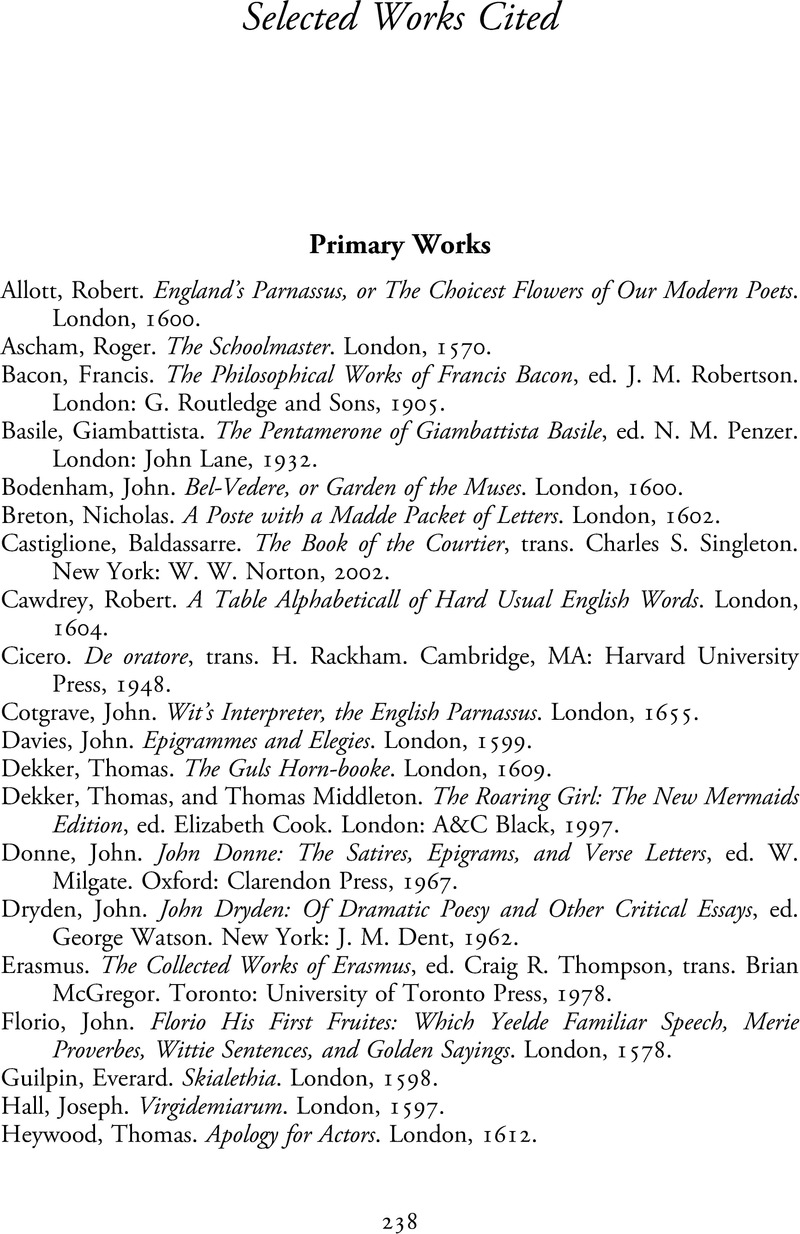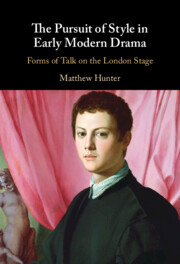Book contents
Selected Works Cited
Published online by Cambridge University Press: 26 August 2022
Summary

- Type
- Chapter
- Information
- The Pursuit of Style in Early Modern DramaForms of Talk on the London Stage, pp. 238 - 250Publisher: Cambridge University PressPrint publication year: 2022



